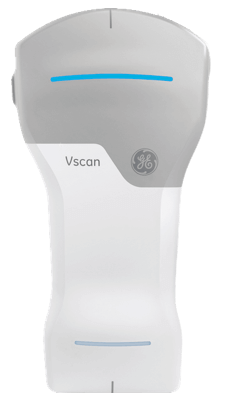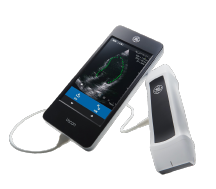
Patients visiting their physician with right upper quadrant (RUQ) pain may have vague symptoms that are difficult to diagnose. A condition that physicians commonly check for is gallstones, but it is difficult to reliably diagnose with a physical exam and review of medical history alone.
Bedside ultrasound is an option for providers who are interested in expanding their ability to diagnose patients who are clinically suspected of having acute calculous cholecystitis.
Why Handheld Ultrasound for Gallstones
According to a piece in the Atlas of Handheld Ultrasound, “Bedside [ultrasound (US)] of the biliary system has been shown to decrease the costs as well as emergency department length of stay in patients with cholelithiasis. Bedside US can detect gallstones, a thickened gallbladder wall, pericholecystic fluid, and a sonographic Murphy sign to assist in diagnosis of acute cholecystitis. Also, point-of- care US for gallbladder disease is a skill that can be learned by physicians at all levels of training.”
Pocket-sized mobile ultrasound devices (PUDs) have also been found to be a helpful addition to the physical exam. According to a study published in PLOS One, ” After a simple and short training course, a PUD examination can be used in addition to a physical examination to improve the answer to ten common clinical questions concerning in- and outpatients, and can reduce the need for further testing.”
How Handheld Ultrasound Stacks Up
Handheld ultrasound offers clinicians portability and easy point-of-care imaging that ultimately transforms the traditional physical exam and expands its capabilities into areas that were previously only available through slow and expensive testing. According to the Journal of Ultrasound in Medicine, “Point-of-care examinations with a pocket-size imaging device increased medical residents’ diagnostic accuracy and capability.”
Additionally, a study in the Internal and Emergency Medicine journal noted, “PSUD is a reliable tool for the diagnosis of cholelithiasis when used by expert operators potentially reducing the need for further diagnostic tests. It can even be successfully used by non-expert operators in outpatients setting after a short-focused training.”
As diagnostic demands on physicians increase, handheld ultrasound options could be a primary consideration for physician leaders who want to best serve their patients, improve outcomes and increase the effectiveness of individual practitioners.




